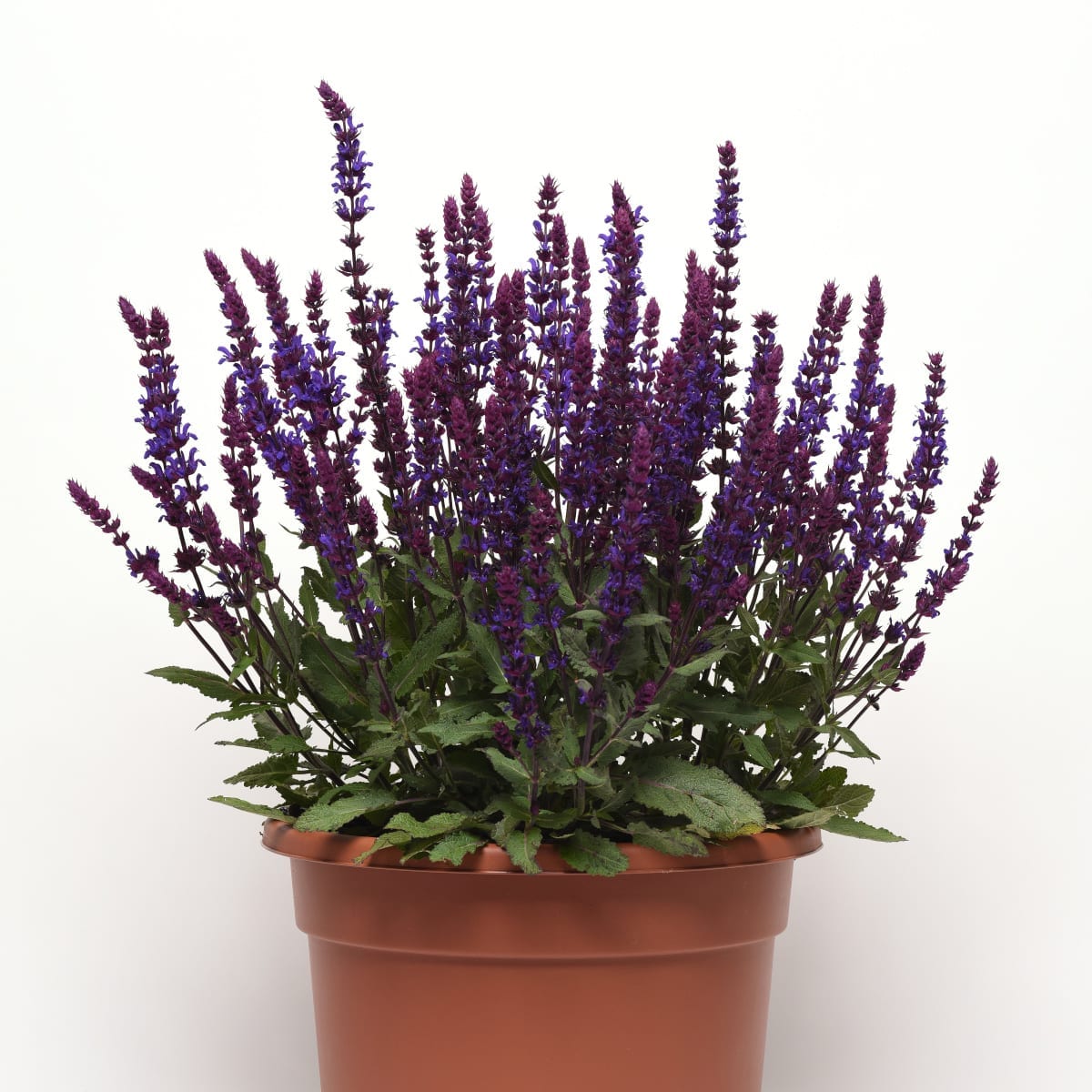| Zone | 4 |
|---|---|
| Maturity | Perennial |
| Germination (days) | 4-8 |
| Seedling temperature (°C) | 20-22 |
| Height (cm) | 25-30 |
| Spreading (cm) | 15-20 |
| Colour | Blue |
| Formulation | Filmcoat seed |
Salvia Salvatore Blue
Salvia Salvatore Blue
7.89$
In stock
Salvia Salvatore Blue has been added to cart
Buy 3 and get a 10% discount
Recommendations :
Indoor sowing : It is suggested to sow 8-9 weeks before planting outside. (*) Outdoor: Direct sow after all danger of frost in full sun.
(*) From 7 to 10 days after the date of the last ground frost.
It will flower the first year of sowing. With its high spikes of dark blue flowers, Salvia Salvatore Blue is a «wow» factor in any garden. It also attracts hummingbirds and pollinators!
Cultivation mode
Plantation : Indoor: Sow indoors 8-9 weeks before the last frost. Barely press the seeds into seed starting formula. As soon as seedlings emerge, provide plenty of light on a sunny windowsill or grow seedlings 7.5-10 cm beneath fluorescent plant lights turned on 16 hours per day, off for 8 hours at night. Raise the lights as the plants grow taller. Most plants require a dark period to grow, do not leave lights on for 24 hours. If you are growing salvia in small cells, you may need to transplant the seedlings to 7.5-10 cm containers when seedlings have at least 2 pairs of true leaves before transplanting to the garden, so they have enough room to develop strong roots. Outdoor: Direct sow after all danger of frost in full sun in a well-drained but moisture-retentive soil. Remove weeds and work organic matter into the top 15–20 cm of soil: then level and smooth. Sow seeds evenly and thinly and barely cover with fine soil. Keep evenly moist. Seedlings will emerge in 4-8 days. Thin to 30–45 cm apart when seedlings are about 5 cm tall.
Soil : Indoor: Well-drained, porous seedlings soil to prevent overwatering.Outdoor: Adapt to all types of well-drained soils.
Culturals practices : Before planting salvia out in the garden, seedling plants need to be “hardened off”. Accustom young plants to outdoor conditions by moving them to a sheltered place outside for a week. Be sure to protect them from wind and hot sun at first. If frost threatens at night, cover or bring containers indoors, then take them out again in the morning. This hardening off process toughens the plant’s cell structure and reduces transplant shock and scalding. Select a location in full sun in a well-drained but moisture-retentive soil. Prepare the bed by turning the soil under to a depth of 15-30 cm removing any debris, and lightly raking as level as possible. The addition of organic matter (leaf mould, compost, well-rotted manure) benefits all gardens and is essential in recently constructed neighbourhoods. Plant on a cloudy day or in the late afternoon to reduce transplant shock. Dig a hole for each plant large enough to amply accommodate the root ball. Input the plant and gently loosen the root ball with your hands to encourage good root growth. Thoroughly water and apply a light mulch layer on top of the soil to conserve water and reduce weeds.Keep weeds under control during the salvia growing season. Weeds compete with plants for water, space and nutrients, so control them by either cultivating often or use a mulch to prevent their germination. Mulches also help retain soil moisture and maintain even soil temperatures. For perennials, an organic mulch of aged bark or shredded leaves lend a natural look to the bed and will improve the soil as it breaks down in time. Always keep mulches off a plant’s stems to prevent possible rot. Careful watering is essential in getting salvia perennials off to a good start. Water thoroughly at least once a week to help new roots grow down deeply. Soil should be damp at about 2.5 cm below the soil surface. You can check this by sticking your finger in the soil. Water early in the morning to give all leaves enough time to dry. One inch of rain or watering per week is recommended for most perennial plants. You can check to see if you need to add water by using a rain gauge.Until plants become established, some protection from extreme winds and direct, hot sunlight may be necessary. Good air movement is also important. After new growth appears, a light fertilizer may be applied. Keep granular fertilizers away from the plant crown and foliage to avoid burning injury. Use low rates of a slow-release fertilizer, as higher rates may encourage root rotting. “Deadhead” removes spent flower heads to encourage continuous flowering and prevent seed development. Remove and discard foliage after a hard frost in fall. In colder regions, apply another layer of mulch after the ground freezes in fall. Remove this mulch in the spring.
| Latin name |
Salvia nemorosa |
|---|---|
| Use |
fragrant flower, flower bed |
| Floraison |
July to September |
| Sowing calendar - Biennials and Perrennials flowers |


